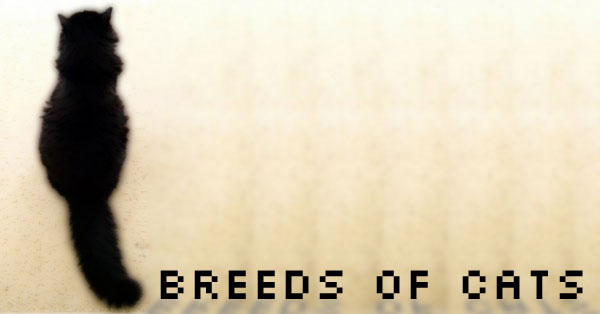
![]()
Scottish Fold
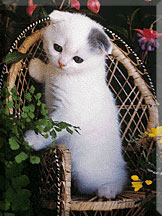
The very unusual folded-forward ears of this breed originated from what is called a "spontaneous mutation" in a Scottish cat back in the early 1960s. Subsequent line-breeding was successful in reproducing the ear-folds. Just a few decades later, the Scottish Fold is one of the rising stars of the cat world. Scottish Folds come in a wide array of colors, but, guess what? Not all have folded ears. It seems that kittens either inherit the folds, or they don't. By the age of four or five weeks, the folds should have appeared, if they are going to. They are mellow and affectionate cats. Scottish Folds are found in both longhair and shorthair varieties, in a great number of color and pattern combinations.
Selkirk Rex
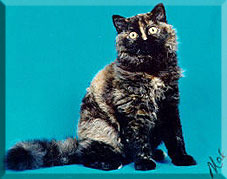
The Selkirk Rex was developed from a natural mutation that arose in the U.S. Like the other Rex cats, the Cornish Rex and Devon Rex, this breed has a naturally curly coat. Otherwise it more closely resembles the American Shorthair in body type. This is a very new breed that is not yet recognized by all registries. It usually comes in solid colors, and is typically an affable companion.
Siamese
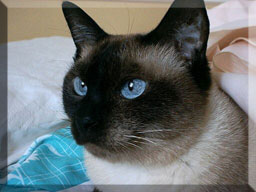
The Siamese is distinguished by its brilliant blue eyes and its colored "points" (ears, face, tail, and feet), which provide a striking contrast to its light-colored body. It is vocal, demanding, lively, and affectionate. Today's show Siamese display a very long, slender body type, and a long, wedge-shaped head with huge ears. Some breeders work with a more moderate, rounded type of Siamese, known as the Traditional (Applehead) Siamese. Siamese were originally recognized in the seal, blue, chocolate, and lilac point colors. In some associations, additional colors and patterns are accepted as part of the Siamese breed, while other associations call these cats Colorpoint Shorthairs.
Siberian
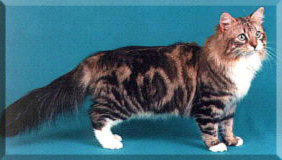
"Siberian" is the name given to Russia's native semi-longhair. This large, powerful cat is still quite rare in the U.S., and is not yet widely recognized. Brown tabby is perhaps the most common color scheme, but many others are available as well. Look for this breed to continue to move upwards on the popularity scale.
Singapura
This very pretty breed apparently developed in Singapore from the melange of Asiatic breed types available there. In size and conformation it is reminiscent of the Abyssinian, though coloration is somewhat different. It is usually a grayish-cream, with a white chest and brown ticking on the back. A very outgoing and involved breed, the Singapura rarely encounters someone it doesn't like. They are somewhat rare.
Snowshoe
This interesting breed, which in perfect form sports a white mask and four "snowshoes," is derived from crosses between the Siamese and American Shorthair. It is a medium-sized cat with smooth coat, and often blue eyes. This is a well-proportioned cat with a friendly disposition that probably is going to rise quickly in popularity. This breed is not widely recognized.
Somali
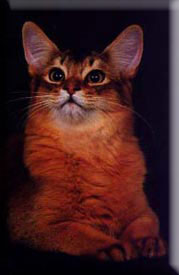
The Somali is perhaps most easily described as a long-haired Abyssinian. Somalis are often referred to as the "longhaired version of the Abyssinian." But in reality, they are not really that longhaired. Not in the sense, anyway, of a Persian or Manx. This lively breed with a bushy tail has sometimes been called the "fox cat". Its dense, soft coat exhibits the ticked tabby pattern - the pattern most commonly known in wild cats. They are available in the blue, fawn, red (sorrel), and ruddy colors. Somalis share the playful, exuberant personality of their Abyssinian cousins, and can generally be counted on to be loving family members.
Sphynx
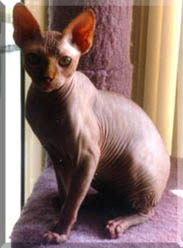
The winner, hands down, in the "Most Unusual Cat" category, is the Sphynx, the hairless breed (though it is actually covered with a very soft, fine down). No mistaking these guys, who do look as if they stepped right out of a Pyramid hieroglyph. Despite being relatively hairless, the breed does show coloration of various types and patterns. Because the Sphynx lacks hair to absorb natural skin oils, it must be bathed frequently. The Sphynx is not recognized by all associations.
Sterling
The Sterling was the name proposed for the silver Persian. The decision was made to keep these cats within the Persian breed, and the Sterling name has been dropped.

visitors
since 12th July 1998.
Contact me if you have any questions or suggestions.
This site is best viewed with Internet Explorer 6, 800 x 600 pixels & 32-Bit True Colours.